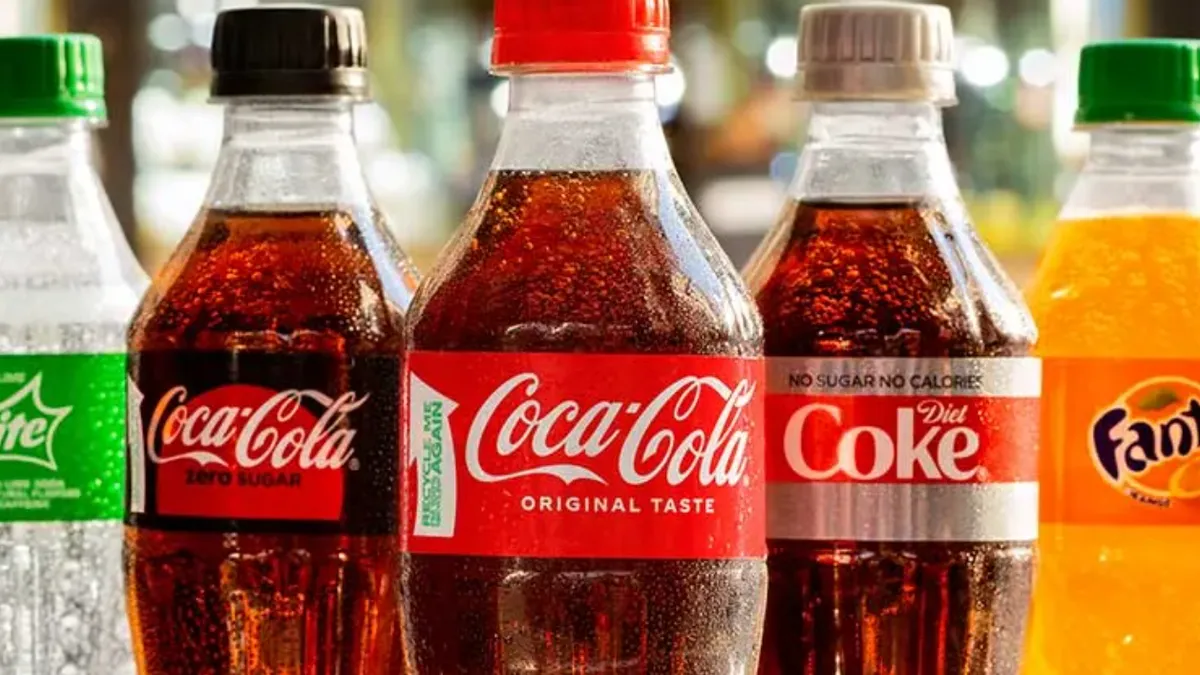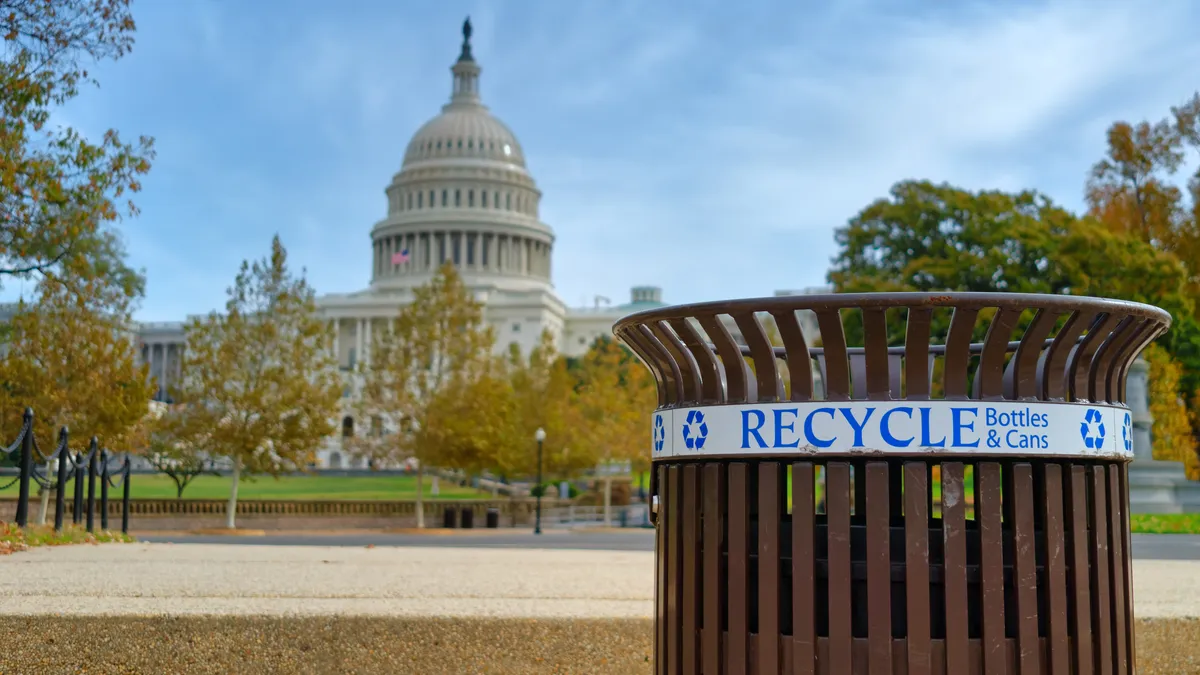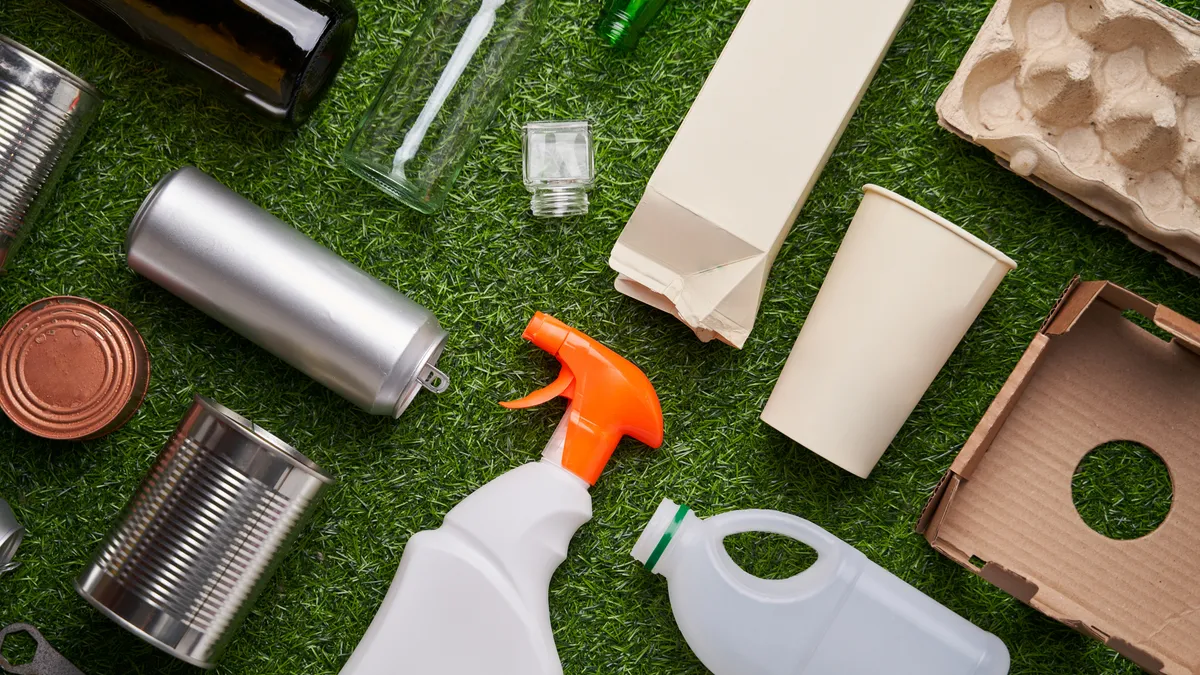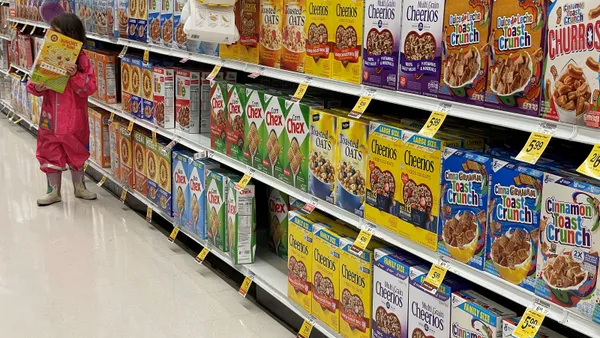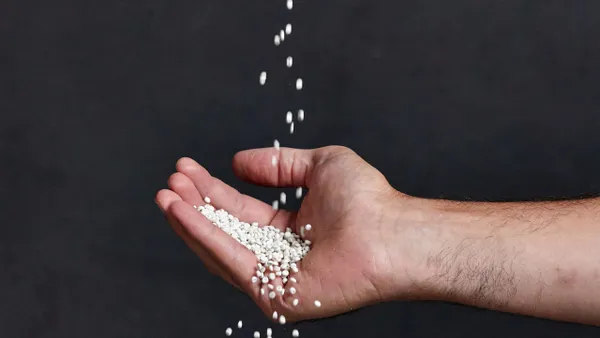Dive Brief:
- PET bottles are now estimated to have a 28% recycling rate in residential systems, according to data shared by The Recycling Partnership.
- A PET Recycling Coalition report last week said that since the Partnership launched the brands-backed group in 2022, 24 million new pounds of PET bottles have been captured along with 5 million pounds of non-bottle PET packaging.
- In the near term, the coalition says it seeks to exceed an acceptance rate of 60% for non-bottle PET and “achieve scaled recycling” for pigmented and opaque PET by the end of 2025.
Dive Insight:
When The Recycling Partnership launched the coalition, it was driven in part by companies demanding rPET for packaging to meet corporate sustainability goals and regulatory requirements, as well as by reclaimers seeking more material from MRFs to increase rPET production to sell to companies for packaging. The Partnership said that there’s more demand for clear recycled PET, whereas manufacturer demand for rPET derived from pigmented or opaque PET is low.
Specifically, the coalition aimed to increase the capture of PET bottles; widen acceptance of PET trays, cups and clamshells in community recycling collection programs; unlock new supplies of rPET for packaging manufacturers; and strengthen recycling systems of pigmented and opaque PET. The coalition is funded by the likes of Coca-Cola, Kraft Heinz and Danone North America, and its steering committee members include Eastman, Indorama Ventures, the National Association for PET Container Resources, Niagara Bottling, Procter & Gamble and the Walmart Foundation.
Many beverage brands and others say they want to buy recycled PET to increase the proportion of recycled content in their bottles. Some brands have said there’s not enough supply — or affordable supply — to buy, although there’s been a mixed picture of how much this is a factor. But Coca-Cola, a supporter of the coalition, even co-launched a competition this year aimed at finding innovations that could increase rPET supply. Coca-Cola reported in its most recent 2022 sustainability report that 15% of the PET it used is recycled PET.
It can be hard to get a clear picture of how much PET is being collected for recycling to boost supply. EPA’s most updated recycling data dates back to 2018; the agency estimated that the recycling rate of PET bottles and jars was about 29%, citing the American Chemistry Council and other industry data.
Regardless, increasing the collection of PET, known by some consumers as #1 plastics, is a key part of the equation now and going forward.
According to Partnership data, bottles dominate PET packaging; 18% of PET packaging in the U.S. is not bottles. Within that subset, the Partnership reports that just 9% of non-bottle PET fruit containers, tubs and trays are recycled.
The Partnership reports that the coalition has so far granted $5.12 million to 23 awardees, including three to MRFs that will separate pigmented and opaque PET and one to a reclaimer focused on creating a new end market for that material. The coalition said it was unable to fulfill about $15 million in additional funding requests and that it’s seeking to raise $52 million total for its efforts.
The coalition argues that the need for additional funding is heightened by changing policy, namely the addition of more state extended producer responsibility laws. “[I]n states like Oregon, the EPR framework will not unlock the full opportunity for non-bottle PET circularity unless sufficient responsible end markets exist,” the report states. “Our Coalition granting has helped develop those end markets but more work is needed.”



